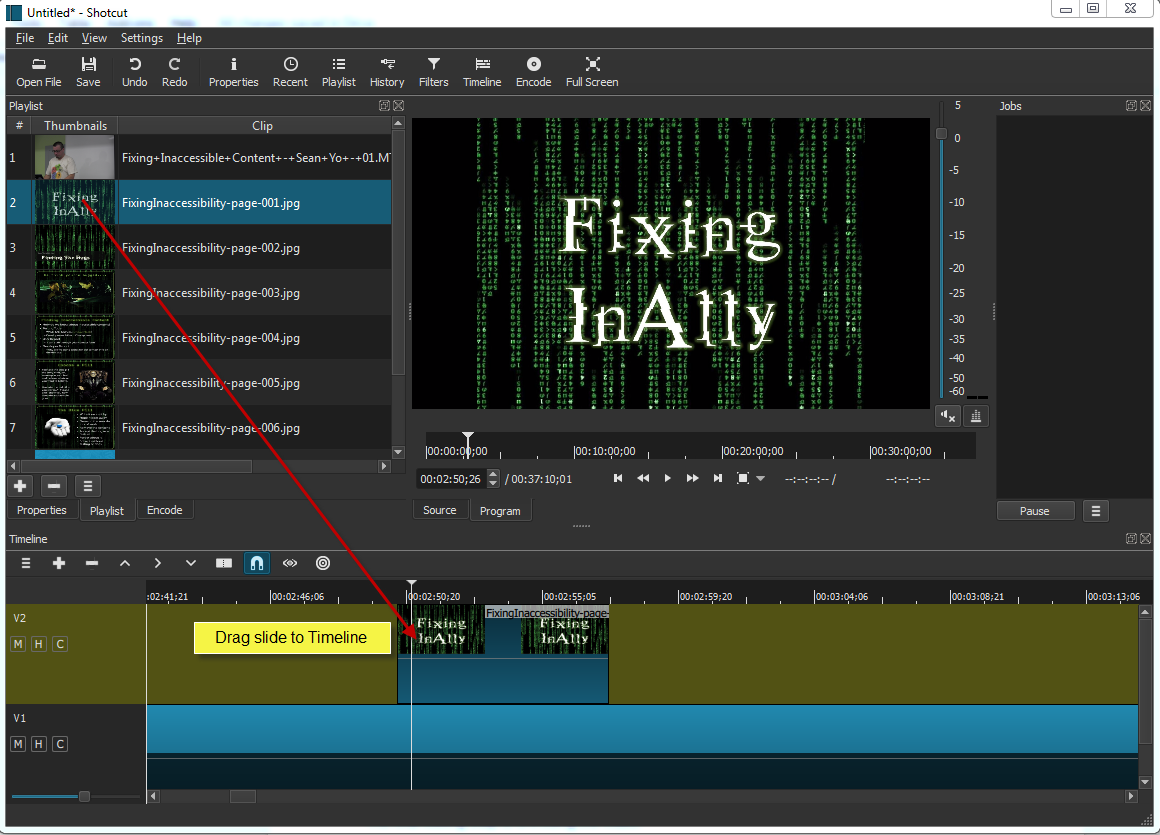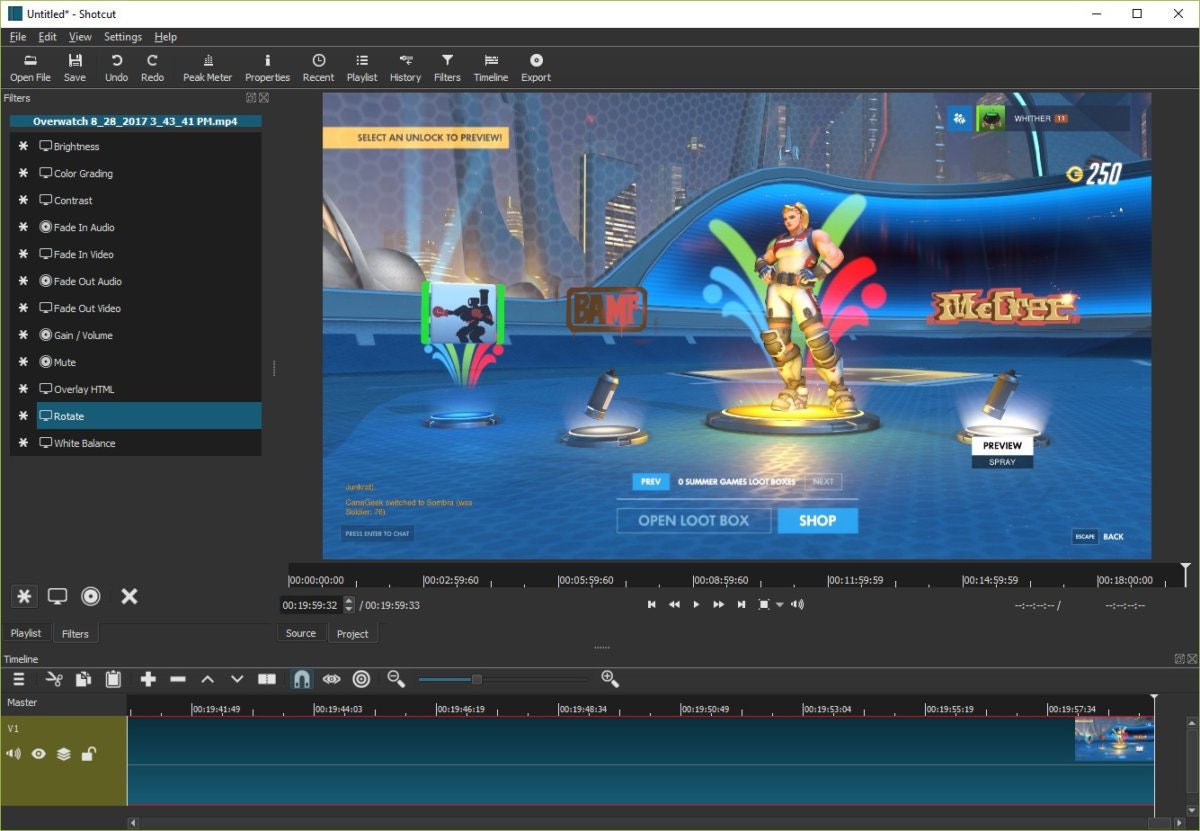
So in those cases the “good” option in Convert To Edit Friendly would be preferable because while the bitrate will be very high, it will still be playable even at 4K 60fps on most computers. The bitrate might reach such high levels combined with the high resolution that it might stutter and lag just trying to play it. One thing also to keep in mind is that if you use codecs like ProRes and DNxHR, Ut Video, etc… for 4K video you might not be able to even play it on most computers.
#Shotcut video editor manual free#
If you have enough space for it then feel free to use them but if you don’t and you’re not going to be taking the footage around in other programs to use again and again before making your final export then the H.264 option in Convert To Edit Friendly will serve you just fine. That whole trip from the editor to the compositing program and back to the editor would be done with codecs like ProRes and DNxHR, Ut Video, etc because the video quality will not go down in any generations throughout that whole trip. Like let’s say you want to take a piece of footage from your timeline and do some compositing for advanced special effects then bring it back to your editor to continue editing. Those are especially best if you have to take that video and re-encode it again for use in another program and bring it back to an editing program. So the very high bitrate is to give you a file that isn’t going down a generation image-wise and the I-frames only is to give a file that will be much easier to scrub around in the timeline as it’s not compressed like a normal H.264 file would be.Ĭodecs like ProRes and DNxHR, Ut Video, etc… are fantastic codecs but they will enormous sized files especially for 4K 60fps videos. Also note that the description for the good option for H.264 says “I-frame only” which means it’s very little compression. The H.264 that they mean is a regular H.264 final encode which means not with the very high bitrate that the Convert To Edit Friendly option will give you. Any thoughts on that? If the only reason h.264 is not recommended is because it is cpu intensive to work with then I’m probably ok as I have a pretty high end system, ryzen 5900x, 32gb ddr4 3600 ram, gen 4 nvme ssd… then again I am doing 4k60fps…Īs for options I was referencing the advanced options, use sub-clip, deinterlace, override frame rate, fps, frame rate conversion, and convert to bt.709 colorspace.Īlso, a lot of people say that editing in h.264 is a bad idea so suggested I actually convert to ProRes, import and edit, then export to h.264 again to upload to youtube.

Also, a lot of people say that editing in h.264 is a bad idea so suggested I actually convert to ProRes, import and edit, then export to h.264 again to upload to youtube. I am going to experiment with quality in shutter vs shotcut. You said that h.264 VFR source converted to h.264 CFR(aka using the shotcut built in convert to edit friendly ‘good’ option) should be ok, and that is what I am leaning towards, but from what I’ve read I thought the conversion will compress things again causing a reduction in video quality? I was experimenting with shutter encode so that I can set more options that shotcut allows but admittedly it takes quite a while. I’ve learned a bit, or at least have been reading a lot about codecs since I posted this. When I said “a little faster” I meant how long it took to encode to the edit friendly version. Do any of the other options matter or just leave them to default? I really can’t find much detail on this.Īlso, is there a way to convert multiple files? Dragging them in one by one will be annoying, it took 24 minutes to do a 30 minute video and I have probably 8+ hours of video to go through split up across a dozen videos. Sorry if dumb question, I am pretty knew to video editing, but would really like to upload to youtube, reasonably, the best video quality I can. My source video codec is h.264, am I actually losing anything if I just use that when converting? Other than it taking a little longer? If there will still be some loss in quality how much is there and how much of a difference between good better and best?


Now it’s a little faster than “good” which is h.264 but the file size is huge.

Originally I thought I wanted “best” which is ut video. Hi all, using my phone as my recording device, 4k60fps, but apparently it is variable refresh rate so I am getting the message to convert.


 0 kommentar(er)
0 kommentar(er)
